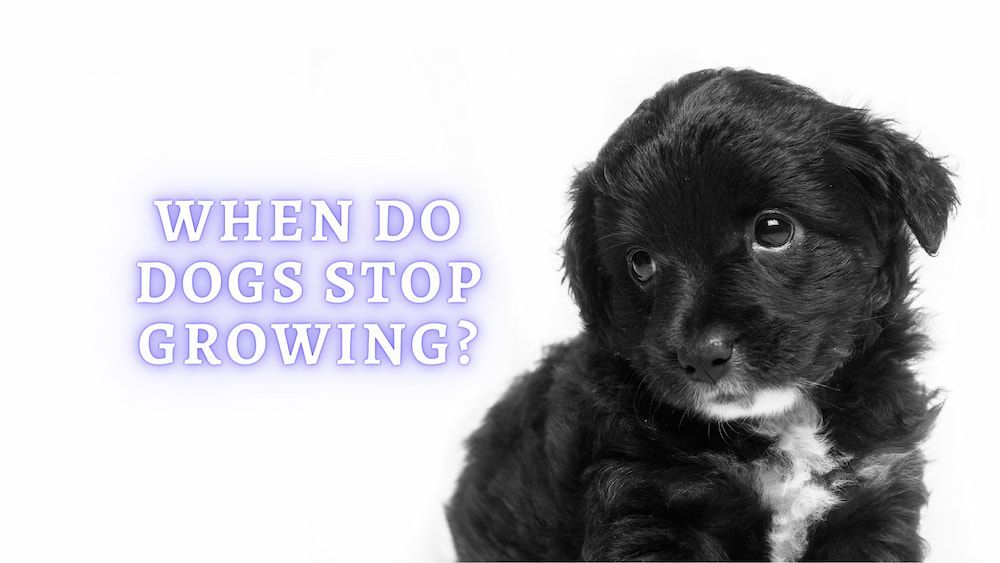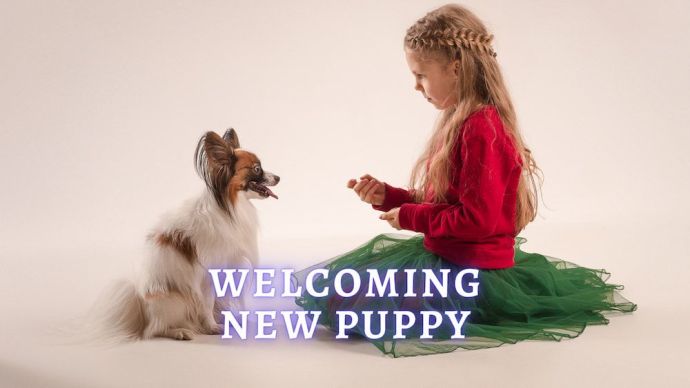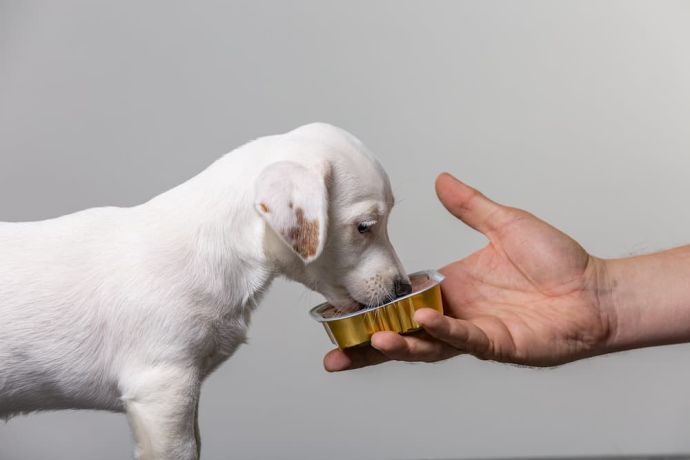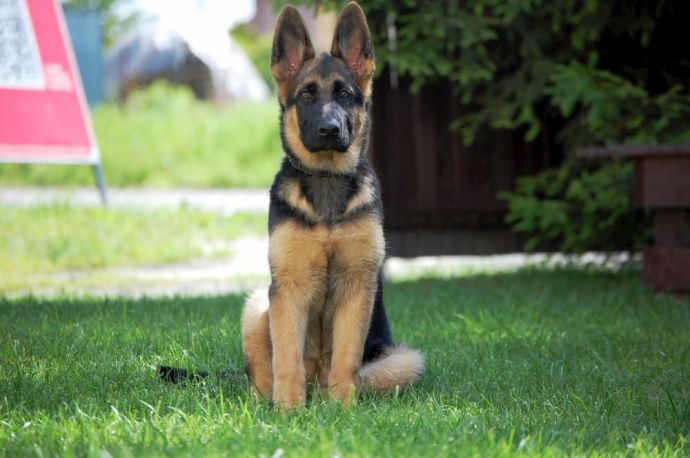When Do Dogs Stop Growing? How Do Puppies Grow?
Written by:
Author: Scott Jeffrey
Scott is a professional blogger with 12+ years of experience in writing, and holds an MA in anthropology. He has two cats as housemates. Also, Scott is passionate to research on pet-related topics such as dog training, puppy feeding, and cat health.
View all 63 articlesLearn about our editorial process and veterinary review board.
Reviewed by:
Veterinary review
by Dr. Linda Simon
Dr. Linda Simon is a veterinary surgeon working with seven years of experience. She is a fellow of the British Veterinary Association and specializing in animal medicine. Also, she has been the Woman magazine resident vet for the past two years and writes a regular column for them, focusing on pets and their health.
View all 30 articlesLearn about our veterinary review board
Viewed: 194
Updated on: 07/20/2021
It can be very rewarding to watch your puppy grow and to nurture them as they grow up.
Dogs reach a mature size, usually at around 18 to 24 months in large breeds and 6 to 12 months in smaller breeds. The speed at which a puppy grows is dependent on a number of factors such as their genetic background, the size of their parents, their breed, and their overall bone structure. As you continue to care for your puppy during their teenage months, you might not notice much incremental growth, but if you were to take a picture of your dog every week and compare them, you are likely to see quite a difference over time.
Between the ages of 1 and 2, dogs tend to develop muscle and fat. They ‘fill out’ but do not change much in size.
DVM Linda Simon
How fast do Dogs grow?
The speed that a dog grows often comes down to the breed, the genetic factors, nutrition, and the sex of a dog.
Your vet can give you a good indication of when your pet will stop growing, and the breeder can let you know more about when the parent stopped growing as well as what their growth pattern looked like.
Most dogs will reach their full size between 6-18 months, but they will still remain rambunctious and active puppies for a long time after they have been fully grown.
While they may look like adults, most take a few years to settle down!
When do Dogs Stop Growing?
Dogs will stop growing based on their genetics and physical traits. Puppies will require training and human interaction to develop into adult dogs that can be obedient regulate emotions. However, their physical development will continue as long as they are able to receive regular feeds and the basic care required to keep them well.
How do Puppies grow?
Puppies will grow in the same way that our children and other mammals do. A puppy has muscles, bones, and soft tissues that grow throughout its younger years. As adults, we can develop our dogs’ posture, physical fitness, and muscle tone with the right nutrition and exercise.
Bones are the main factor that determines the way a puppy will grow. The long bones in a puppy’s leg will grow along two areas called a growth plate. These are areas of cartilage located along the end of the bones, and they are very thin regions where new bone growth occurs.
A growth plate is a flexible area, and as the new tissue in this area grows, it calcifies and becomes a bone. When the plates are done producing new tissue, they close and stop growing. When your puppy is smaller, these growth plates are prone to injury. Young puppies should not engage in heavy play or excessive exercise as this can lead to problems with the growth plates. It is also a poor idea to let your puppy jump and strain themselves at greater heights, such as jumping on or off the couch area.
Rather than repetitive exercise (such as jogging) on hard surfaces, stick to natural running on grass or sand.
DVM Linda Simon
Size and breed-related Puppy growth factors
Smaller breeds stop growing much sooner than larger breeds. Larger breed dogs show much more growth and progression in their growth, and some of the largest breeds can continue to grow for more than 24 months after they are born.
Smaller breeds like the Chihuahua often finish growing at 6 to 8 months.
When fully grown, they will only weigh about 6lbs. Great Danes, however, are 1 lb at birth and continue to grow to an average final weight of 100lbs.
Because of the sheer amount of growth that needs to take place in these larger breeds, they will need large amounts of high-quality puppy food, and they need the extra time to convert the food into the building blocks needed for growth. Larger breeds cost more to keep due to food costs and make sure they have ample room to be comfortable. Keep this in mind, especially with larger breeds that can weigh over 150lbs, like some larger Great Danes or Mastiffs.
Larger breeds are also more prone to musculoskeletal disorders such as OCD and Hip Dysplasia which can be costly to diagnose and treat.
DVM Linda Simon
Factors that alter Puppy growth rate
Aside from the breed of your dog, several other factors can determine their overall size and weight in the future:
Genetic differences between breeds
Every dog is going to have its own unique genetic code passed down through its parents and lineage. This code will determine their overall adult size. Puppies from larger parents may be larger than the average breed member and have a longer growth cycle. The reverse can be true for puppies with smaller parents.
Remember, though, a dog’s environment will also play a role, and genetics are just one factor.
DVM Linda Simon
Nutrition
When puppies receive an imbalanced or poor quality diet, it can adversely affect their growth. When a puppy is malnourished or unable to reach its growth potential, it may never reach its expected adult height or weight. Feeding high-quality food such as high-calorie puppy food is important. Diets will need to be rich in calories, high in digestible protein, and contain the right amount of calcium and phosphorous.
A large breed puppy will benefit from joint supplements or foods containing ingredients such as Glucosamine and Collagen, which may prevent joint disease from developing.
DVM Linda Simon
Can a doggy DNA test predict the size of your puppy in adulthood?
A pet DNA test is a new way to learn more about your breed and make predictions for its future. If you have adopted a dog and you don’t know anything about the parents, the DNA test can let you know more about its genetic makeup. If you have adopted a puppy, a doggy DNA test can let you know about factors like the breeds they are mixed with and their overall expected size. They won’t be able to tell you, definitively, how large your dog will grow as there is more than genetics at play.
How does Spaying or Neutering affect Puppy growth rates?
Early neutering can affect growth plates and may be a contributing factor in some joint diseases.
DVM Linda Simon
Spaying or neutering will not cause your pet to stop growing and should not stunt growth. Metabolic rates may be affected. In fact, dogs altered before 16 weeks of age can grow larger than those spayed or neutered later. This is thought to be due to the delayed closure of growth plates.
Hormonal changes are not the only factor in changing growth rates, but when you do choose to spay or neuter, it is important to read up about some of the main effects it can have on growth. You should also appropriately follow your veterinarian’s directions on the right time to spay or neuter based on your pet’s health.
READ MORE: Do Neutered Dogs Live Longer? (Explained by Vet)
When do Ppuppies Stop maturing emotionally?
The process of growing up isn’t just about getting physically bigger. During your pup’s early years, they will find out what they are scared of, what we expect of them, what they shouldn’t be doing, and much more.
A puppy will progress along a timeline from 0-8 weeks when they are cared for primarily by their mother and learn about basic canine to canine interaction. They form their first human attachments at about 8 weeks to 3 months of age when they require positive interactions to learn how to appropriately socialize. At the 4th month of age, you will be able to discern your dog’s personality, and they will begin to form their own behaviors. By the 6th month, many puppies will begin to test boundaries and require proper structure and training to properly mature.
The Adult sized Puppy Phenomenon
Even though your dog may finish growing physically, they are likely to continue displaying puppy-like tendencies for the first few years of their life. It is not unusual to see your dog behaving like a puppy, especially if they are under 2 or 3 years of age. Larger breeds take longer to mature both physically and mentally. Younger dogs often continue to look at their masters as though they were puppies with wide eyes and similar facial expressions. This will eventually start to change as your dog matures, though.
Are paws an indicator of the full size of a Dog?
Puppy paws can be a good indicator of the future size of your dog. The paw size can be a helpful predictor but is just one piece of the puzzle. A puppy’s paws being smaller or larger can give you an indication of their overall height and weight in adulthood. As tiny feet cannot hold up a large breed dog, usually, if you see a puppy with small paws, it is an indication they won’t grow too big.
Does loose Skin determine size?
Excess skin can be a way to predict that your puppy has more room for growth. Most of the growth plates are going to close at 8-12 months of age. Puppies’ grow into their skin,’ and young dogs with large scruffs and lots of wrinkles will be sure to grow a lot larger.
Puppy paws and Adult weight
The majority of growth for a dog will occur in the first year, with medium breeds reaching their full maturity between 12-18 months. Some large breed dogs with giant paws can take 18 months to 3 full years to mature, and paw sizes can change at differing rates. Puppy paws will change over time, but the full size and adult weight might still be difficult to predict from puppy paws because of inconsistent growth rates. Smaller dogs like Chihuahuas may grow quickly within 6 months at a steady rate and without their paws growing too much. Large breeds like Great Danes often have inconsistent growth rates and sporadic growth spurts. Because of these growth spurts (which affect overall size and paw size differently), it is difficult to determine final weight based on their paw size.
Mixed breeds and sizing
It can be quite easy to determine the final size when it is purebred, and you can look at the parents. If you are adopting a mixed breed dog, it can be tough to know which genes are going to be passed down. Canine DNA testing services to determine which type of dog you have adopted can be a good option if you would like to know more about the size of your pet will be when it is full-grown. It can be tough to know which genes are going to be dominant or recessive within your dog.
Can I change the growth of my Puppy?
Ultimately, it is unsafe to try and influence the growth of your puppy. If you are interested in a smaller or larger breed of dog, it is important to look at genetics or to find older dogs that have been bred that look to be about the size of the dog you would like to have. Choose the size of puppy that is manageable for your lifestyle, and never try to influence your puppy’s growth with poor nutrition or factors to try and affect their growth.
Keep some of these considerations in mind if you need more info on how big your puppy will be!
 Puppy Care How Much Water Should A Puppy Drink? Vet Advice On Puppies Daily Water Intake
Puppy Care How Much Water Should A Puppy Drink? Vet Advice On Puppies Daily Water Intake - 373
- 0
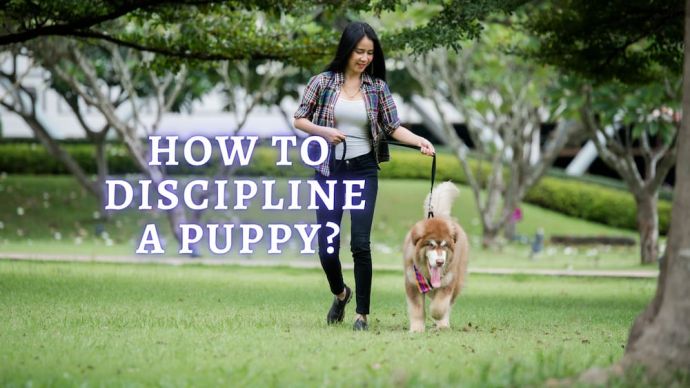 Puppy Care How to Discipline a Puppy? Strategies to Teach Your Puppy Proper Behavior
Puppy Care How to Discipline a Puppy? Strategies to Teach Your Puppy Proper Behavior - 158
- 0
 Dog Veterinary Tips Why is my Dog throwing up: Causes and Preventing (Veterinary Advice)
Dog Veterinary Tips Why is my Dog throwing up: Causes and Preventing (Veterinary Advice) - 21800
- 5
 Dog Care My Dog Keeps Scratching His Mouth: Reasons Why Your Dog Scratching Face
Dog Care My Dog Keeps Scratching His Mouth: Reasons Why Your Dog Scratching Face - 17168
- 1
 Dog Care Why Is My Dog Bleeding From Its Butt? Causes and treatment of rectal bleeding in the dog
Dog Care Why Is My Dog Bleeding From Its Butt? Causes and treatment of rectal bleeding in the dog - 15113
- 0









